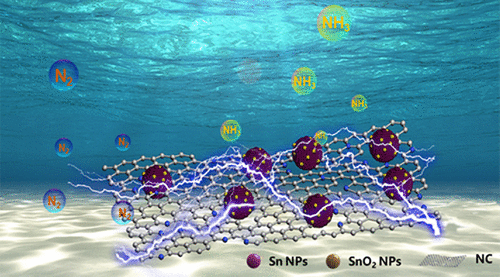恭喜博士生李庆林文章Dual Interfaces Engineered Tin Heterostructure for Enhanced Ambient Ammonia Electrosynthesis被ACS AMI接受!
Dual Interface-Engineered Tin Heterostructure for Enhanced Ambient Ammonia Electrosynthesis
Qinglin Li, Yinpan Zhang, Xiaoxue Wang, Yong Yang*
Abstract:Electrocatalytic nitrogen reduction reaction (NRR) represents a promising alternative route for sustainable ammonia synthesis, which currently dominantly relies on the energy-intensive Haber–Bosch process, while it is significantly hampered by the sluggish reaction kinetics due to the short of glorious electrocatalysts. In this work, we report an efficient porous tin heterostructure with intimate dual interfaces for electrosynthesis of ammonia, which exhibits outstanding NRR efficiency with an NH3 yield rate and Faradaic efficiency as high as 30.3 μg h–1mg–1cat and 41.3%, respectively, and excellent stability as well at a low potential of −0.05 V (vs RHE) in 0.1 M Na2SO4 solution under ambient conditions. This matrix value is superior to the analogue Sn-based heterostructures with a single interface and outperforms the currently state-of-the-art Sn-based catalysts. Comprehensive characterizations and theoretical calculations uncovered the formation of the unique intimate dual interfaces in the tin heterostructure promoting the enhancement of the NRR process, which not only effectively exposes more active sites for stronger N2 chemisorption and activation but also accelerates the interfacial electron transfer and reduces the free energy barrier for the rate-determining *N2H formation step, highlighting the importance of the dual interface effect for the design of electrocatalysts in catalysis.
Keywords:Heterostructure; N2 reduction reaction; Sn; Dual interfacial engineering; Electrocatalysis
